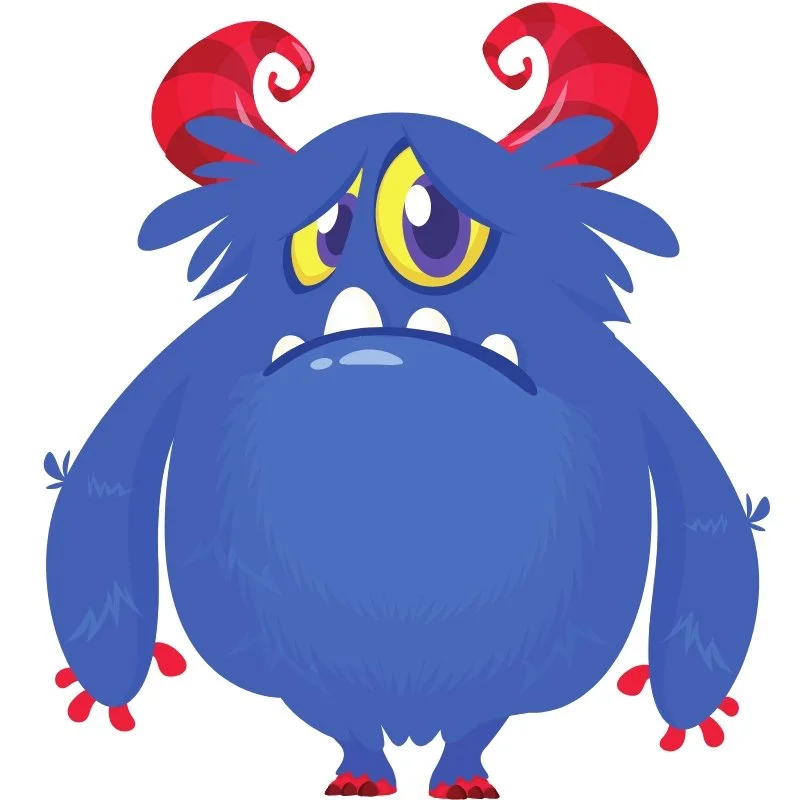Scornie – The Shame Monster
Scornie is one of the Visiting Neuro Monsters. Scornie represents the painful weight of shame and the belief that something is deeply wrong with who you are. Known as the Shame Monster, Scornie embodies the hidden voice that whispers blame, unworthiness, and self-condemnation. Within the Neuro Monsters Universe, Scornie reveals how shame can take root in the nervous system and shape identity, leaving you feeling exposed, defective, or beyond repair.
The Symbolic Role of Scornie
Scornie symbolizes the crushing cloak of judgment that wraps tightly around the self. Its presence shows up when you replay mistakes endlessly, when you feel undeserving of love or connection, or when criticism strikes so deeply that it echoes inside long after the moment has passed. Symbolically, Scornie represents the inner critic magnified into a monster, turning natural self-awareness into cycles of self-attack. By naming Scornie you begin to see shame as a learned signal rather than a fixed truth about who you are.
Scornie often appears as a dark, hunched figure with a piercing gaze, holding up distorted mirrors that reflect only flaws. Its form shrinks and hides, yet its presence feels heavy and consuming. Facing Scornie with emotional neutrality allows you to notice shame without collapsing into it, making space to separate your identity from your mistakes.
Shame in the Brain
In neuroscience terms Scornie is tied to the anterior cingulate cortex, the insula, and the prefrontal cortex. The anterior cingulate cortex heightens sensitivity to error and conflict, fueling self-criticism. The insula processes the visceral pain of shame, activating the same circuits that respond to physical injury. The prefrontal cortex reinforces harsh self-evaluations by creating stories of unworthiness and repeating them as truth.
Scornie symbolizes this neural loop where error detection, emotional pain, and narrative combine to create a deeply embodied experience of shame. The brain learns to treat social rejection or criticism as existential threat, locking the system into cycles of self-condemnation.
The Protective Instinct Behind Scornie
Although it can feel devastating, Scornie’s instinct is protective. Shame is the nervous system’s way of keeping you aligned with the group, alerting you to behaviors that could lead to rejection or isolation. The purpose is to preserve belonging and safety by signaling when you risk losing connection. The challenge is that Scornie exaggerates this instinct, turning it inward as self-attack rather than outward as useful feedback. By seeing the protective purpose behind Scornie you can begin to reclaim shame as a survival signal rather than an identity.
Training with Scornie
Training with Scornie means learning how to meet shame with compassion instead of collapse. Cognitive Neuro Therapy emphasizes naming shame neutrally and practicing the separation between self-worth and behavior.
When Scornie appears you can practice the following steps. Pause and notice the feeling of exposure or condemnation without labeling yourself as defective. Name it as shame rather than as identity. Place a hand on your body to signal safety and self-support. Speak a grounding statement such as “I made a mistake, but I am not a mistake.” Shift focus to an action that restores connection, such as reaching out to someone you trust or practicing a small act of self-kindness.
Over time Scornie begins to soften not by vanishing but by being trained. You learn that shame is a signal pointing to belonging needs, not proof of unworthiness. By approaching Scornie with patience, you transform the inner critic into an ally that reminds you of your values without erasing your worth. Scornie becomes a reminder that you are never defined by your worst moment but by the ongoing practice of compassion and growth.


